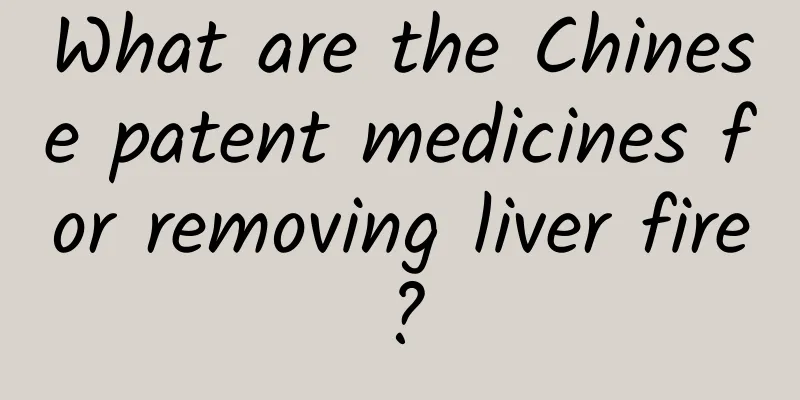Can chicken gizzard dissolve kidney stones?

|
Kidney stones are a type of stone that can have a relatively serious impact on humans. Patients with kidney stones usually experience severe pain when urinating. In addition, blood may be present in the urine. Chicken gizzard lining is a medicinal ingredient that can help dissolve stones in the human body, but it is not effective as just one Chinese medicinal ingredient, so multiple medicinal ingredients need to be used together. 1. Chicken's gizzard lining to treat kidney stones Chicken gizzard lining refers to the inner wall of the gizzard of a domestic chicken, which is a digestive organ used to grind food. This product is one of the traditional Chinese medicines and is used to treat indigestion, spermatorrhea, night sweats, etc. It has excellent effects, so it is named "gold". Chicken gizzard lining has certain effects, but it is difficult for any Chinese medicine alone to cure a disease. It needs to be combined with other medicines to exert its effect. For the treatment of kidney stones, it is recommended that you choose oral liquid extracted from pure Chinese medicine. It has a very good stone-dissolving effect. The adverse symptoms caused by stones will be relieved or disappear after taking it for 1-3 days. If you continue to take it, the stones will be slowly dissolved and excreted. Gallbladder, kidney, and urethral stones: Use 50 grams of chicken gizzard lining and corn silk, boil a bowl of soup and drink it once, 2-3 times a day, for 10 days. Avoid eating liver, fatty meat, and egg yolks. 2. What are the basic symptoms of kidney stones? The kidneys have special functions in the human body and need to be well protected. Kidney stones are the most common type of kidney disease in humans, mostly occurring in middle-aged and young adults, more often in men than in women. So, what are the symptoms of kidney stones? How can you tell if you have kidney stones? Please see the introduction below. 1. Pain Kidney stones may persist for a long time without symptoms, especially if the stones are large. Smaller stones have a larger range of movement. When a small stone enters the ureteropelvic junction or ureter, it causes violent peristalsis of the ureter to promote the excretion of the stone, resulting in colic and hematuria. The pain caused by kidney stones can be divided into dull pain and cramping pain. 40%-50% of patients have a history of intermittent pain. The pain is often located in the waist and abdomen, and is mostly paroxysmal but can also be continuous pain. Some pain may only manifest as soreness and discomfort in the lower back, and activity or labor may cause the pain to occur or worsen. Kidney stone colic is severe, knife-like pain that often occurs suddenly. The pain often radiates to the lower abdomen, groin or inner thigh, and to the labia in women. When renal colic occurs, the patient appears to be in acute condition, curled up in bed, pressing his hands tightly on his abdomen or waist, or even rolling over in bed, groaning. Attacks often last for several hours, but can also be relieved in minutes. When renal colic is severe, the patient will turn pale, break out in cold sweats, have a thin and rapid pulse, and even have a drop in blood pressure, leading to a state of collapse, accompanied by nausea, vomiting, and abdominal distension. When colic occurs, the urine volume decreases, and after the colic is relieved, polyuria may occur. 2. Hematuria It is another major symptom of kidney stones. When pain occurs, it is often accompanied by gross hematuria or microscopic hematuria, with the latter being more common. Large amounts of gross hematuria are not common, and hematuria may worsen after physical activity. Patients with kidney stones may excrete sand and stones in their urine, especially when pain and hematuria occur, and the urine may be mixed with sand or small stones. When the stone passes through the urethra, it may cause obstruction or pain. 3. Treatment of Kidney Stones Kidney stones are the most common in life. The main reason is the unbalanced combination mentioned above, which leads to excessive intake of stone-causing ingredients in the diet, thus causing stones. Today, the editor will give you a detailed introduction to the dietary treatment method for kidney stones, hoping to help everyone. 1. Supplement vitamin B6 and non-essential amino acid glycine to dissolve oxalic acid crystals. 2. Supplementing with magnesium and vitamin B2 can increase the absorption and utilization of oxalic acid and improve the condition of stones. 3. Supplement calcium and phosphorus foods appropriately, drink more fresh milk and yogurt and other foods. Drink more than 1,000 cc of fresh milk every day; phosphorus can be supplemented by yogurt or yeast. 4. Pay attention to supplementing vitamin A nutrients every day, about 10,000 units per day. 5. Eating more foods rich in potassium will not cause alkaline urine and is less likely to form stones. Eat more vegetables, fruits, bananas and other foods rich in potassium ions. In addition, do not eat refined foods, as they are deficient in vitamins and minerals and can easily cause stones. |
<<: Can chicken gizzard cure gastritis?
>>: When is the best time to eat chicken gizzard lining?
Recommend
Wedding essentials become a cure for illness
Holy and elegant, it signifies a long-lasting hap...
Smell is the first sign of a serious illness! 7 odor signals of illness that can be detected
A comatose male patient in his 30s was sent to th...
The efficacy and function of Liuqu
In today's society, health preservation seems...
Ten tips to prevent colds in winter
As winter approaches, the temperature drops and p...
The difference between processed and roasted aconite
Most of the effects of cooked aconite and process...
Plantain and Gout
Plantain is the dried and intact seed of the plan...
He chose one thing and devoted his whole life to it. He spent more than 40 years fighting against an "epidemic"!
On the road of scientific exploration, countless ...
International Forest Day | Explore the candidate area for the Asian Elephant National Park and encounter the "rainforest giant"
In the spring, the Xishuangbanna area, a candidat...
The efficacy and function of thorny bamboo leaves
Thorny bamboo leaves are a relatively familiar tr...
The efficacy and function of Sagittaria
Many people are not very clear about the effects ...
State Post Bureau: The top three brands in terms of public satisfaction with express delivery services in 2022 are SF Express, JD Express, and Postal Express
The State Post Bureau issued the "Notice on ...
The efficacy and function of tree tiao
Do you know what tree tiao is? If you know, do yo...
The efficacy and function of loquat root
Loquat root is a kind of traditional Chinese medi...
The efficacy and function of long-spur orchid
The Chinese medicinal herb, Cymbidium, is a very ...


![Verbena[picture]Efficacy and function](/upload/images/67ca317b2cdce.webp)






